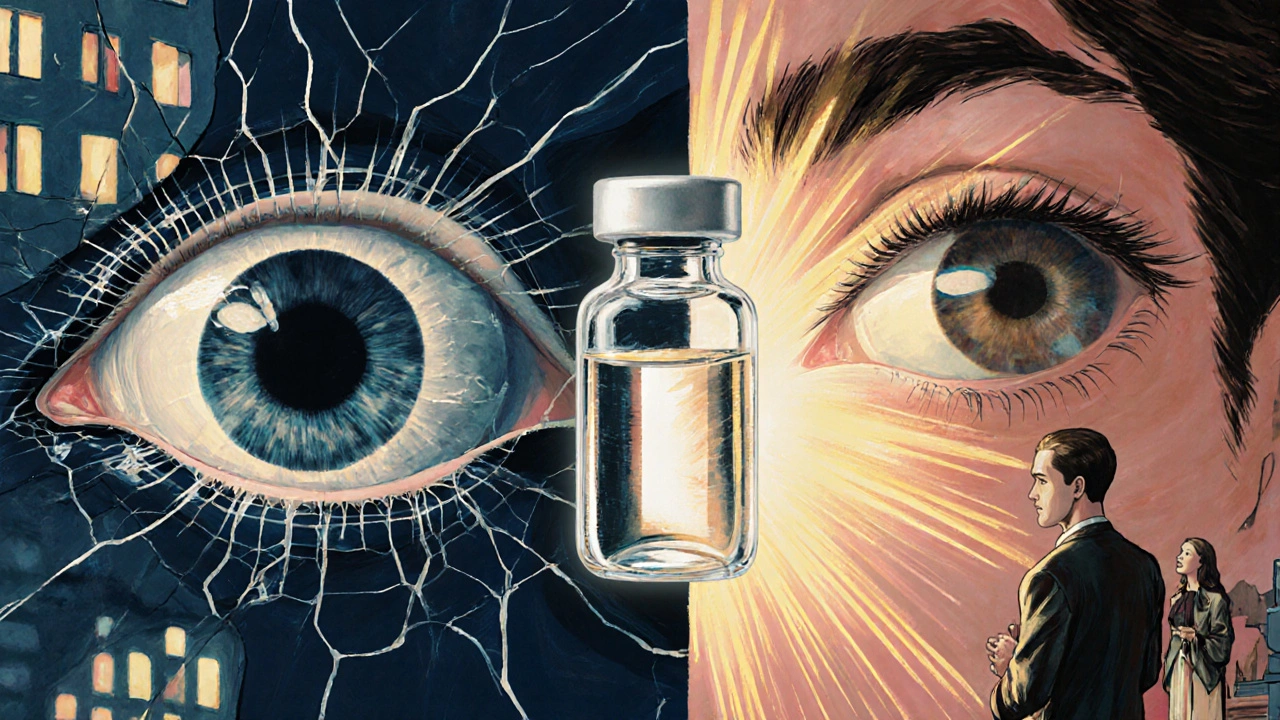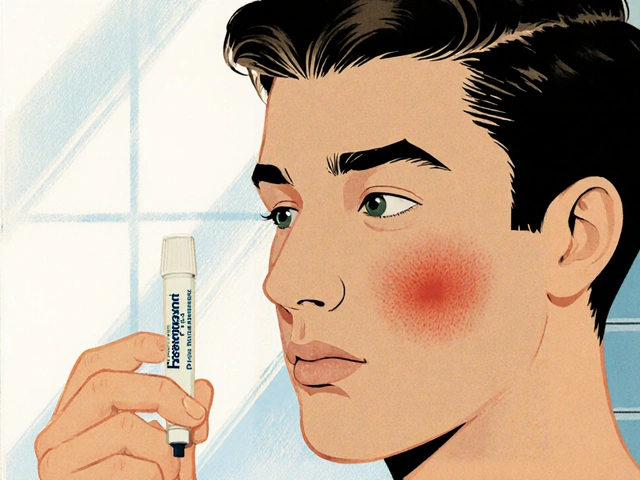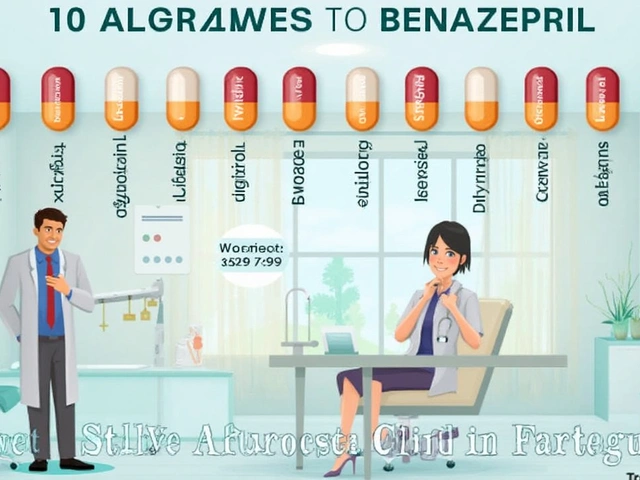Macular edema isn’t just blurry vision-it’s fluid building up in the macula, the part of your eye responsible for sharp, central sight. If left untreated, it can lead to permanent vision loss. One of the most effective treatments doctors turn to is loteprednol, a steroid eye drop designed to reduce inflammation without the harsh side effects of older steroids.
What Is Macular Edema?
Macular edema happens when tiny blood vessels in the retina leak fluid into the macula. This swelling distorts vision, making straight lines look wavy, colors seem faded, or reading become difficult. It’s often linked to other conditions like diabetic retinopathy, retinal vein occlusion, or inflammation after eye surgery. Not everyone with these conditions gets macular edema, but when it does happen, it needs fast, targeted treatment.
Traditional steroid treatments, like prednisolone or dexamethasone, work well but can raise eye pressure and increase the risk of cataracts. That’s where loteprednol stands out. It’s engineered to break down quickly in the eye, reducing the chance of long-term damage while still calming inflammation.
How Loteprednol Works Differently
Loteprednol is a corticosteroid, but it’s not like the old ones. It’s called a “soft steroid” because it’s designed to be metabolized into inactive compounds right in the eye. This means it doesn’t stay in your system long, lowering the risk of side effects. Most other steroids linger and can cause spikes in intraocular pressure-sometimes by 10 to 15 mmHg. With loteprednol, studies show pressure changes are minimal, often staying within normal limits even after weeks of use.
It works by blocking the body’s inflammatory signals. When the eye is injured or irritated, immune cells release chemicals like prostaglandins and cytokines. These cause swelling and fluid buildup. Loteprednol shuts down the production of these signals at the source, reducing the leakiness of blood vessels in the retina.
When Do Doctors Prescribe Loteprednol?
Loteprednol isn’t used for every case of macular edema. It’s most commonly prescribed in three situations:
- After eye surgery-especially cataract surgery. Up to 15% of patients develop temporary macular edema post-op, and loteprednol drops are often started the day after surgery to prevent it.
- Uveitis-related swelling-inflammation inside the eye can spread to the macula. Loteprednol helps control the inflammation without the risks of stronger steroids.
- Non-diabetic retinal vein occlusion-when a vein in the retina gets blocked, fluid leaks out. Loteprednol is often used alongside anti-VEGF injections to speed up recovery.
It’s rarely the first choice for diabetic macular edema. That’s usually handled with anti-VEGF drugs like ranibizumab or aflibercept. But if inflammation is a big part of the problem, loteprednol can be added to the treatment plan.
How to Use Loteprednol Eye Drops
Loteprednol comes in two strengths: 0.2% and 0.5%. The 0.5% version is usually for more severe cases or short-term use. Most patients start with one drop in the affected eye, four times a day. After a week or two, the doctor will reduce the frequency to twice daily, then once daily, depending on how the swelling responds.
It’s important to follow the schedule closely. Skipping doses can let inflammation creep back. But using it longer than prescribed can increase risk-even with its safer profile. Most treatment courses last 2 to 6 weeks. Never stop or restart the drops without talking to your eye doctor.
Here’s how to apply them correctly:
- Wash your hands first.
- Tilt your head back and pull down your lower eyelid to form a pocket.
- Hold the bottle close to your eye-don’t touch the tip to your skin or eyelashes.
- Squeeze one drop into the pocket. Close your eye gently for 30 seconds.
- Press the inner corner of your eye (near your nose) to keep the medicine from draining into your throat.
Wait at least 5 minutes between different eye drops. If you’re using another medication, like an anti-VEGF injection or lubricant, timing matters.

Side Effects and Safety
Loteprednol is safer than older steroids, but it’s not risk-free. Common side effects include mild burning or stinging right after applying the drop-this usually fades in seconds. Some people report a bitter taste, which happens when the drop drains into the nose.
More serious side effects are rare but possible:
- Increased eye pressure (occurs in less than 2% of users over 4 weeks)
- Cataract formation (extremely rare with short-term use)
- Eye infections (if the bottle gets contaminated)
Never share your eye drops. Always keep the tip clean. If you notice new floaters, severe pain, or sudden vision loss, call your doctor right away. These could signal infection or worsening swelling.
How Loteprednol Compares to Other Treatments
Here’s how loteprednol stacks up against other options used for macular edema:
| Treatment | How It Works | Typical Duration | Key Risk | Best For |
|---|---|---|---|---|
| Loteprednol | Reduces inflammation with low systemic absorption | 2-6 weeks | Low risk of pressure rise | Post-op, uveitis, mild-moderate swelling |
| Dexamethasone implant | Slow-release steroid pellet injected into the eye | 3-6 months | High pressure spike in 30-40% of patients | Chronic cases, non-responsive to injections |
| Anti-VEGF injections | Blocks fluid-leaking proteins (VEGF) | Monthly for 3-6 months | Infection, retinal detachment (rare) | Diabetic macular edema, vein occlusions |
| Prednisolone eye drops | Stronger steroid, slower breakdown | 2-8 weeks | High pressure and cataract risk | Severe inflammation, short-term use only |
Loteprednol’s biggest advantage is safety during short-term use. If you’re recovering from surgery and don’t have diabetes, it’s often the go-to choice. For chronic cases, especially those tied to diabetes, anti-VEGF drugs are more effective long-term-but loteprednol can help speed up early healing.
What Patients Say About Loteprednol
In clinical studies, over 70% of patients with post-cataract macular edema saw noticeable improvement in vision within 2 weeks. Many report clearer vision by day 5. Patients who’ve used both loteprednol and older steroids often say the difference is in comfort: less burning, no blurry vision from pressure spikes, and fewer follow-up visits.
One 68-year-old woman, after cataract surgery, developed swelling that made her feel like she was looking through frosted glass. Her doctor prescribed loteprednol. Within 10 days, her vision returned to 20/25. She said, “I didn’t feel like I was fighting side effects while trying to heal.”

When Loteprednol Isn’t the Right Choice
There are times when loteprednol won’t help-or could even delay recovery:
- If the swelling is caused by a serious infection (like fungal endophthalmitis), steroids can make it worse.
- If you’ve had glaucoma in the past, even mild steroid use needs close monitoring.
- If you’ve tried anti-VEGF injections and they didn’t work, adding loteprednol might not help unless inflammation is clearly driving the problem.
Doctors use OCT scans (optical coherence tomography) to measure the thickness of the macula before and after treatment. If the swelling doesn’t improve after 3 weeks, it’s time to reconsider the treatment plan.
What Comes Next After Loteprednol?
Once the swelling goes down, the goal is to keep it from coming back. For many, that means managing the root cause:
- Controlling blood sugar if you have diabetes
- Managing blood pressure and cholesterol
- Regular eye exams every 6 months
- Using lubricating drops if your eyes feel dry
Some patients need ongoing anti-VEGF therapy. Others just need to stay vigilant. Loteprednol is a tool for healing, not a lifelong fix.
Frequently Asked Questions
Can loteprednol cure macular edema?
No, loteprednol doesn’t cure macular edema-it treats the inflammation that causes it. The underlying cause, like diabetes or surgery, still needs to be managed. Once the swelling is gone, stopping the drops too soon can let it return.
How long does it take for loteprednol to work?
Most patients notice clearer vision within 5 to 7 days. Full improvement usually takes 2 to 4 weeks. If there’s no change after 3 weeks, your doctor may switch treatments.
Can I use loteprednol with other eye drops?
Yes, but you must wait at least 5 minutes between each drop. Always use the steroid last if you’re using lubricants or anti-VEGF injections. Never mix them in the same dropper.
Is loteprednol safe for long-term use?
No. It’s designed for short-term use-typically no longer than 6 weeks. Long-term steroid use increases the risk of glaucoma and cataracts, even with soft steroids like loteprednol. Always follow your doctor’s schedule.
Does loteprednol work for diabetic macular edema?
It’s not the first-line treatment. Anti-VEGF injections are more effective for diabetic cases. But if inflammation is a major factor, loteprednol can be added to help reduce swelling faster and improve the response to injections.
Next Steps for Patients
If you’ve been prescribed loteprednol, keep a simple log: note your vision clarity each day, any discomfort, and whether you’ve missed a dose. Bring this to your follow-up appointment. If you’re unsure whether your symptoms are improving, ask your doctor for an OCT scan-it’s the only way to see the real change in your macula.
Don’t wait for vision to get worse before acting. Early treatment with loteprednol can mean the difference between mild blurriness and permanent vision loss. Stay consistent. Stay informed. And never skip your eye checkups.




Sherri Naslund
November 20 2025ok but have yall ever tried just using ice packs and crying into your pillow? like i swear my vision got better after i screamed at my phone for 20 mins. also why are we letting pharma companies decide what 'inflammation' even means anymore??
they say 'soft steroid' like that's a compliment. sounds like a weak version of the real stuff. i think they just made it so you don't notice the damage until you're blind and they've sold you 12 bottles.